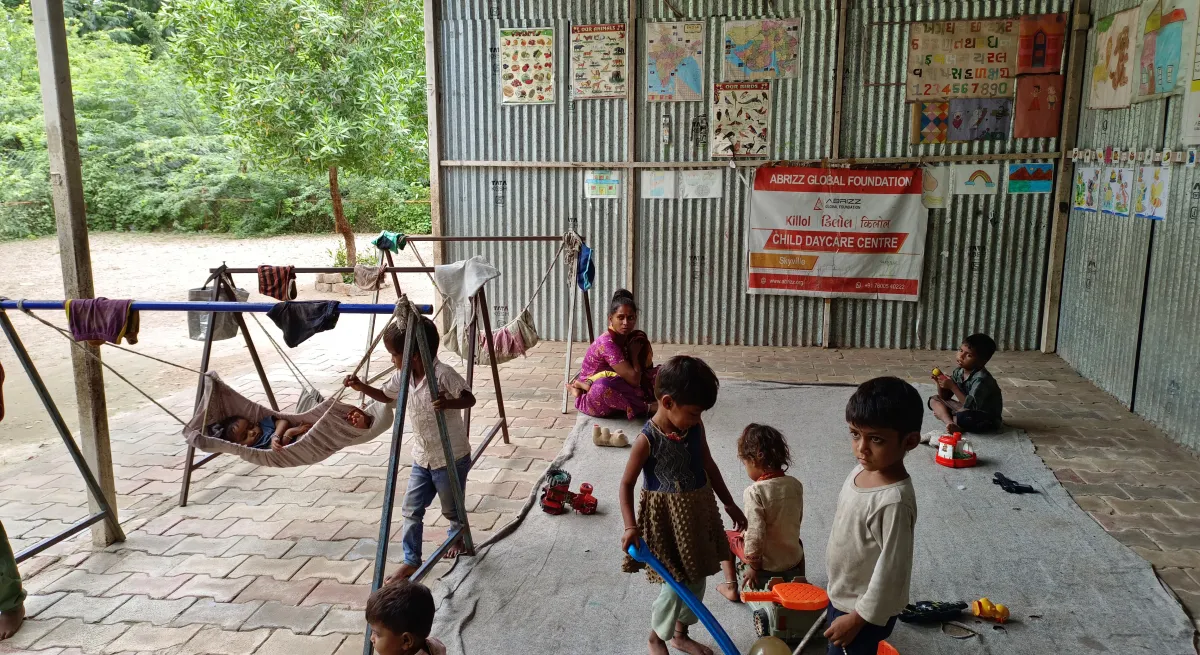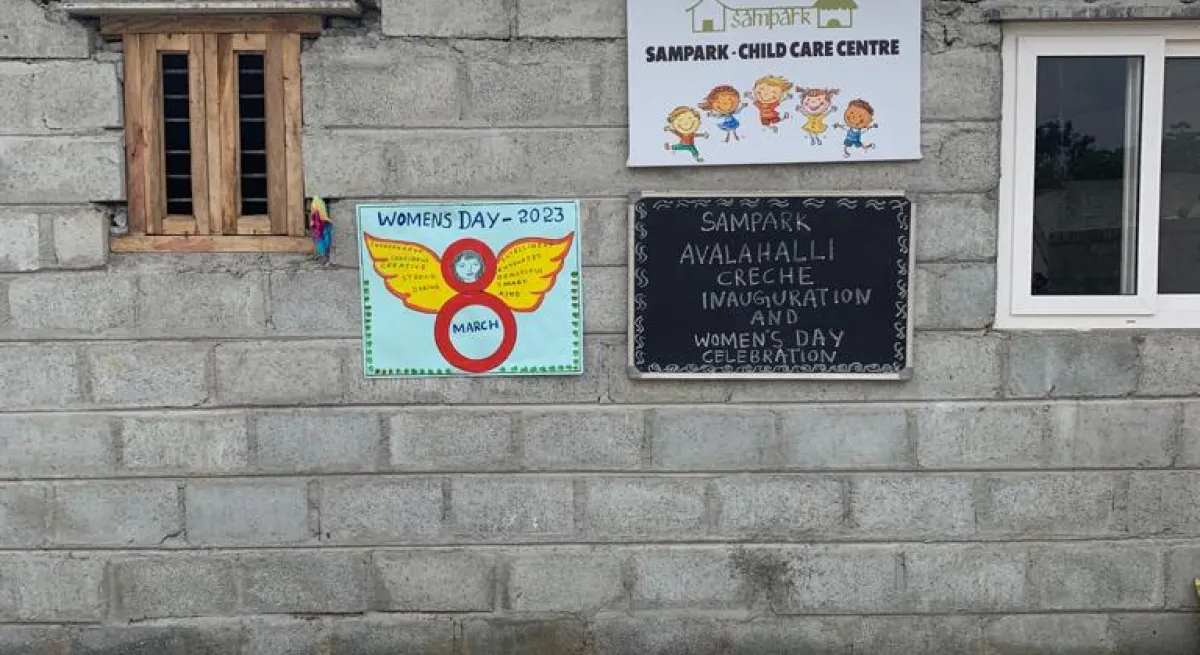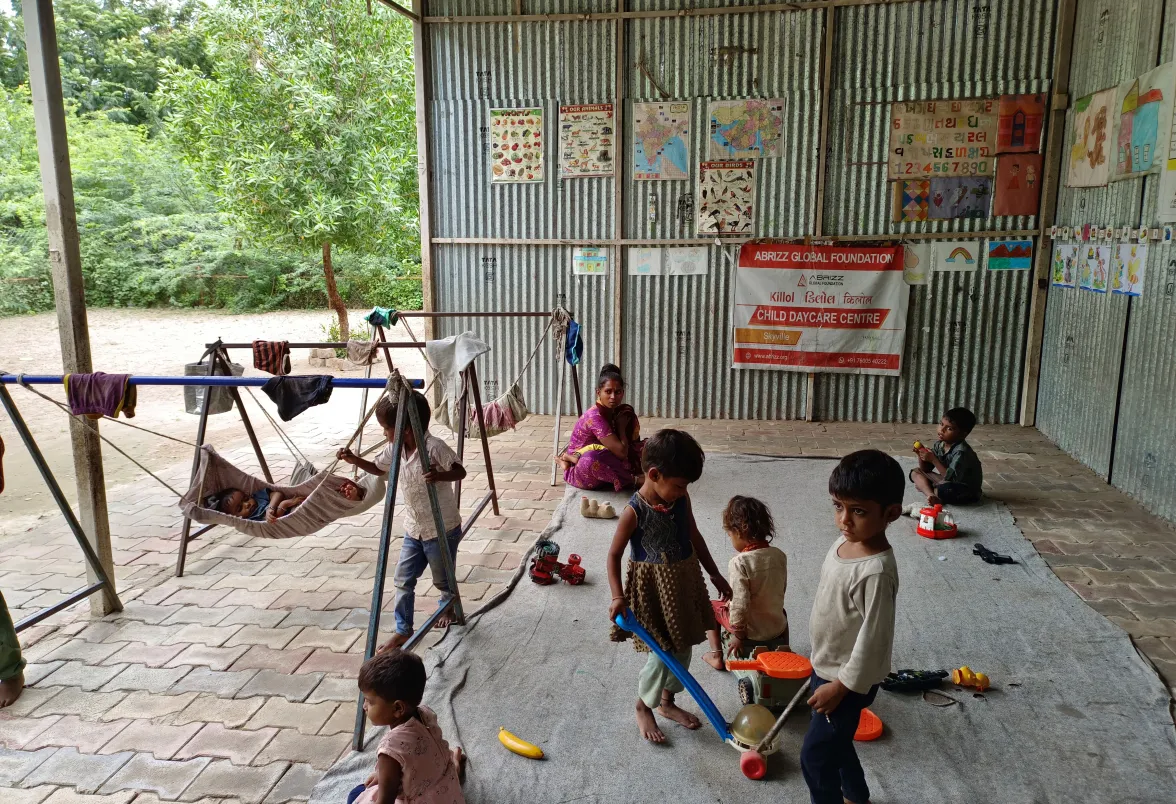In the dynamic world of India's informal workforce, the toil of countless people shapes society. However, addressing the needs of vulnerable populations remains an enormous challenge. Fortunately, the Indian Institute for Human Settlements (IIHS) initiative brings a glimmer of hope, pioneering sustainable childcare solutions for the children of informal women workers.
In this edition of the Wealth Inequality Initiative newsletter, we dive into the transformative work of the IIHS team, exposing their innovative approach towards fostering long-lasting improvements in childcare, education and the overall working conditions of informal workers across India.
How is your programme making lasting improvements to childcare and education, and to the overall working conditions of informal workers in India?
The programme aims to improve the overall wellbeing of the children of informal workers by providing them with safe and secure spaces, nutrition and education. The childcare centres not only support the physical and cognitive development of children but also reduce the childcare burden on working mothers. These centres allow mothers to focus more effectively on their work with the assurance that their children are safe, hence easing their work-related stress and enhancing their overall working conditions. This dual focus on children's education and maternal work conditions is critical for the overall wellbeing of migrant households. The project serves as a pilot that can be expanded and scaled to enhance the working conditions for informal workers across India.
Incremental steps and learning by doing are important to your approach. Why is that the case? And what have been some of the most important lessons so far?
We have recognised the importance of continuously enhancing the capacity of childcare centre teachers to improve early childhood outcomes. We have learnt that material upgrades are less impactful in this context due to the transient nature of these centres, which often relocate within construction sites based on the ongoing work. From early in the project, we noted the frequent movement of these centres, prompting us to shift our focus from physical upgrades to enhancing service quality. This includes prioritising early childhood outcomes and providing a more engaging environment within the centre. This approach aims to maximise the engagement and developmental benefits for children attending the centre, while improving the physical centre incrementally.

How do you ensure that childcare facilities are sustainable and continue to provide high-quality care in the long term?
We believe the sustainability of these childcare centres can be significantly improved through the active involvement of multiple stakeholders, such as employers, state and creche teachers. There is a constant engagement with employers so that they provide space, resources, and necessary materials for setting up the centres. This is critical as it also gives them a sense of ownership of the centre. We also focus on empowering creche workers to ensure that they engage with workers' families, thereby involving them in the everyday quality of service provided at the childcare centres.
What’s more, we are also compiling data to demonstrate to builders and developers the value of childcare centres at worksites in enhancing worker productivity. This involves gathering empirical evidence that showcases how providing reliable childcare can lead to increased efficiency and lower absenteeism among women workers. By presenting this data, we aim to bring more support from the employers and build a case for expanding childcare infrastructure across all construction sites in India.
Can this pilot initiative influence broader policy change or systematic change in the behaviour of construction companies? What do you think is needed in terms of change in those sectors to ensure better childcare?
This pilot showcases how childcare centres can be set up and run at construction sites. However, there is a need to ensure better compliance and regulations. The Building and Other Construction Workers (BOCW) Board can actively be involved in mandating the presence of childcare centres at construction sites. Finally, it is important to recognise childcare as a critical social and economic infrastructure that significantly contributes to overall human development indicators.

How can those who have the means – construction companies, developers, local governments – be motivated to invest in childcare facilities and collaborate with community organisations and vulnerable women?
We are working on developing a comprehensive manual to detail out what it takes to build, run and sustain childcare centres at worksites. We are also adding various models of childcare centres as part of this manual, which will serve as a tool in effectively engaging real estate associations and leveraging Corporate Social Responsibility (CSR) funds. The goal is to ensure that the manual lays out pathways that the builder community and other funds can tap into to scale the childcare centres. It will also prove to be a valuable support for community organisations who are trying to initiate conversations with these players.
What impact can this project have on gender income inequality and women’s working conditions?
The project has the potential to impact several aspects of a mother’s working conditions, for instance:
Women can concentrate on their work better and negotiate for more and better quality of work.
Childcare centres take away some of the childcare burden from women thus allowing them to take rest in between and improving their overall work experience.
Lastly, the centre also provides scope for employers to see women workers as mothers, thereby giving them breastfeeding breaks and thus creating better working conditions for them.
About IIHS

Make an impact that lasts a lifetime — discover opportunities at IIHS to donate, volunteer, work, and learn.
